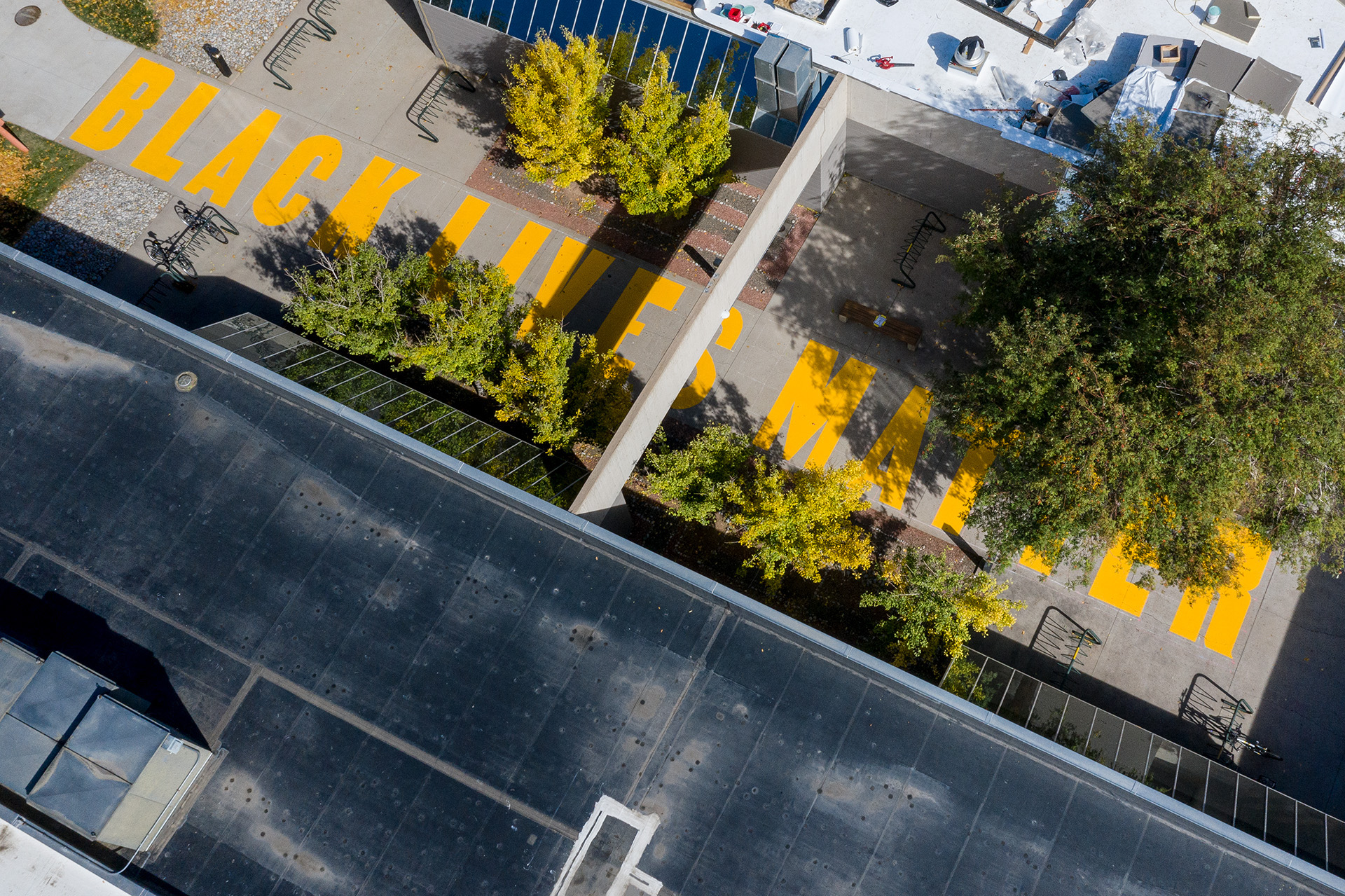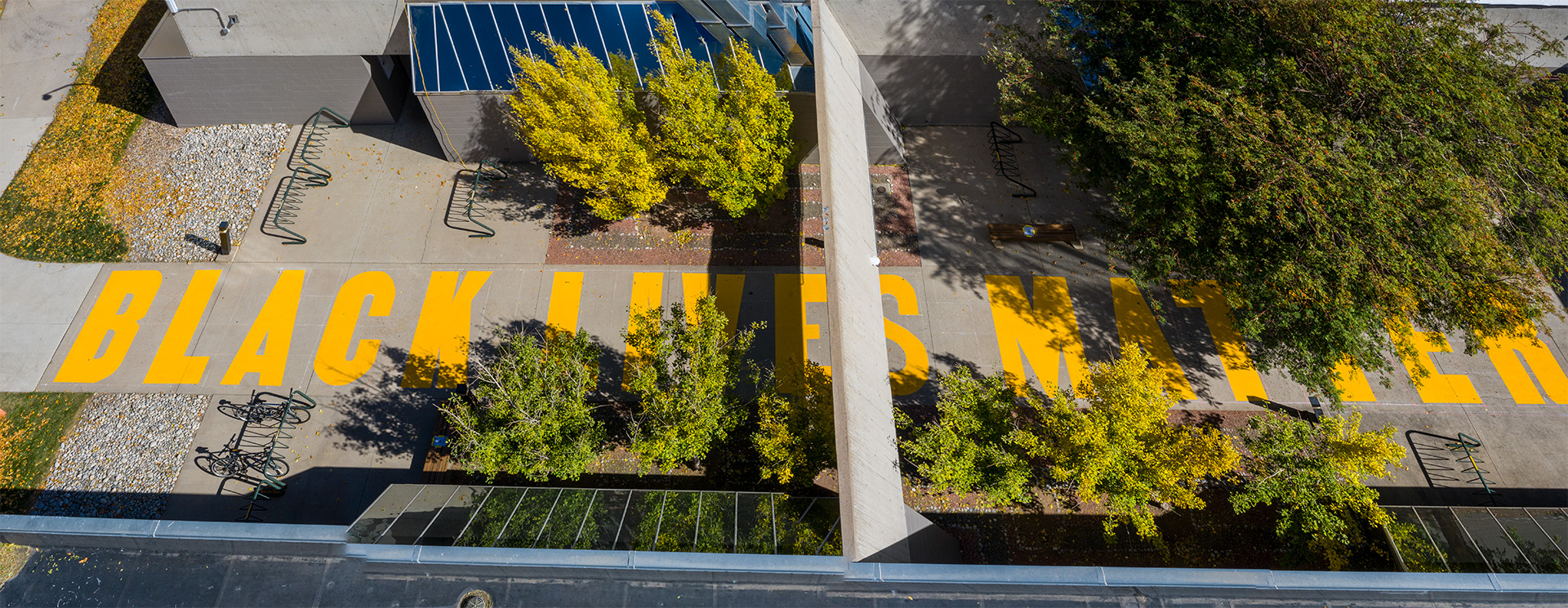
Aerial shots by Joe Mendoza and Ron Bend
Colorado State University kicked off a new educational initiative in early October as the words “Black Lives Matter” were painted in yellow on the pavement north of the Visual Arts Building.
The inaugural installation of the “Engaged Art Walk,” the BLM painting launches a series of events and art projects integrating art, education and civic engagement. The Department of Art and Art History has partnered with other units on campus — including the Department of Ethnic Studies and the Black/African American Cultural Center, with input from the Office of the Vice President for Diversity — to join the nationwide street art movement that emerged this summer with similar pavement paintings.
“With more than 800 non-art majors and more than 450 art majors attending classes in the Visual Arts Building in a typical semester, as well as the countless faculty, staff and visitors who traverse the north courtyard, we envision the Engaged Art Walk as a site for activating CSU’s Principles of Community through education and outreach,” said Eleanor Moseman, associate professor of art history and chair of the department.
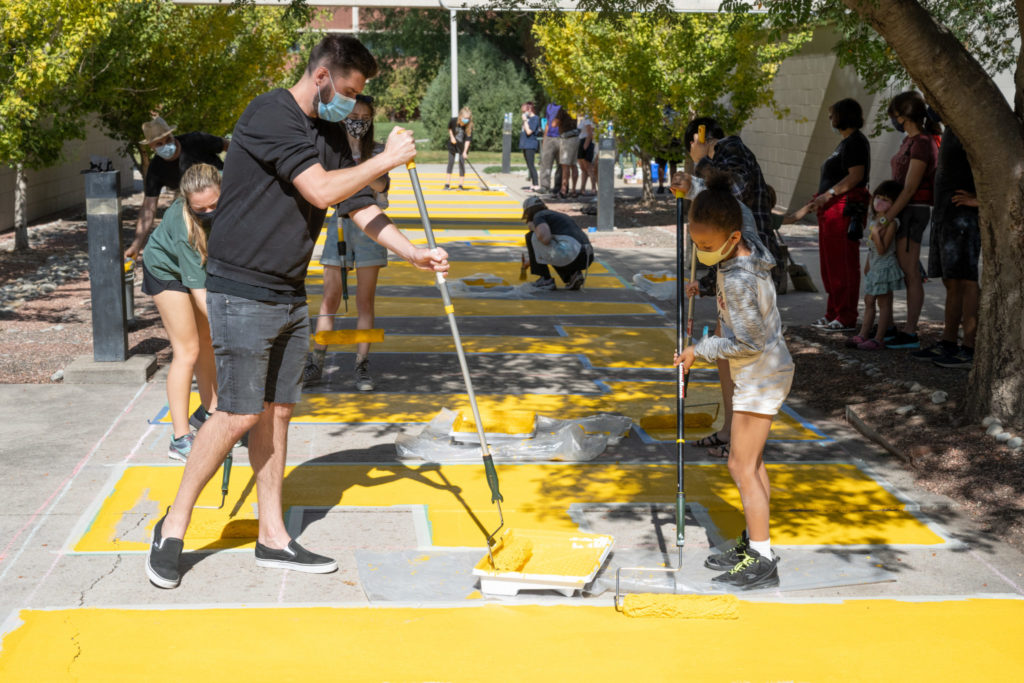
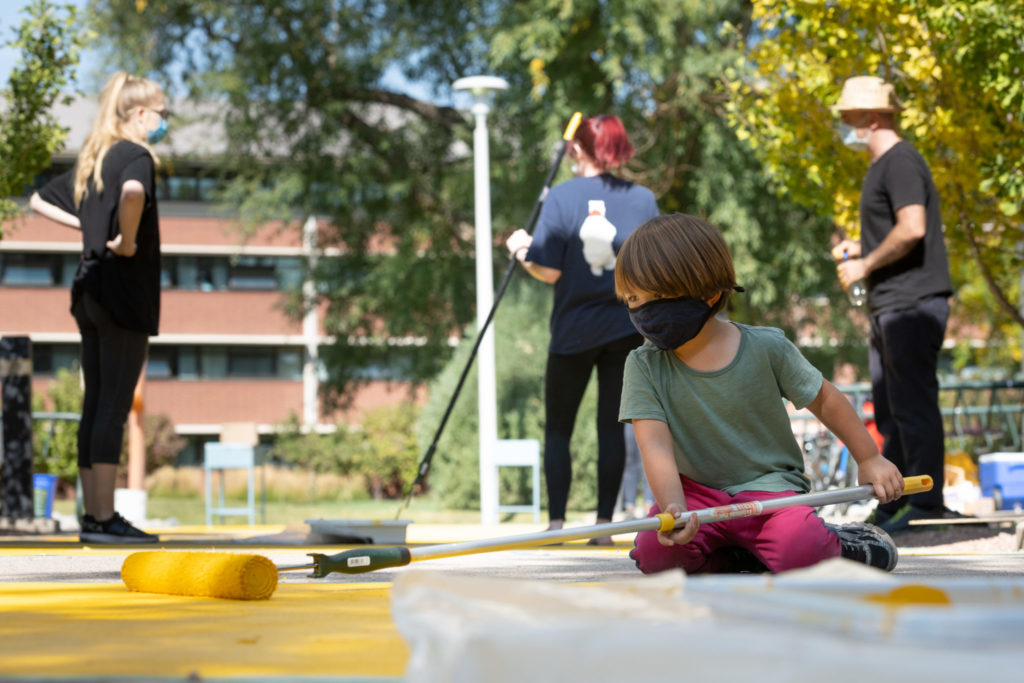
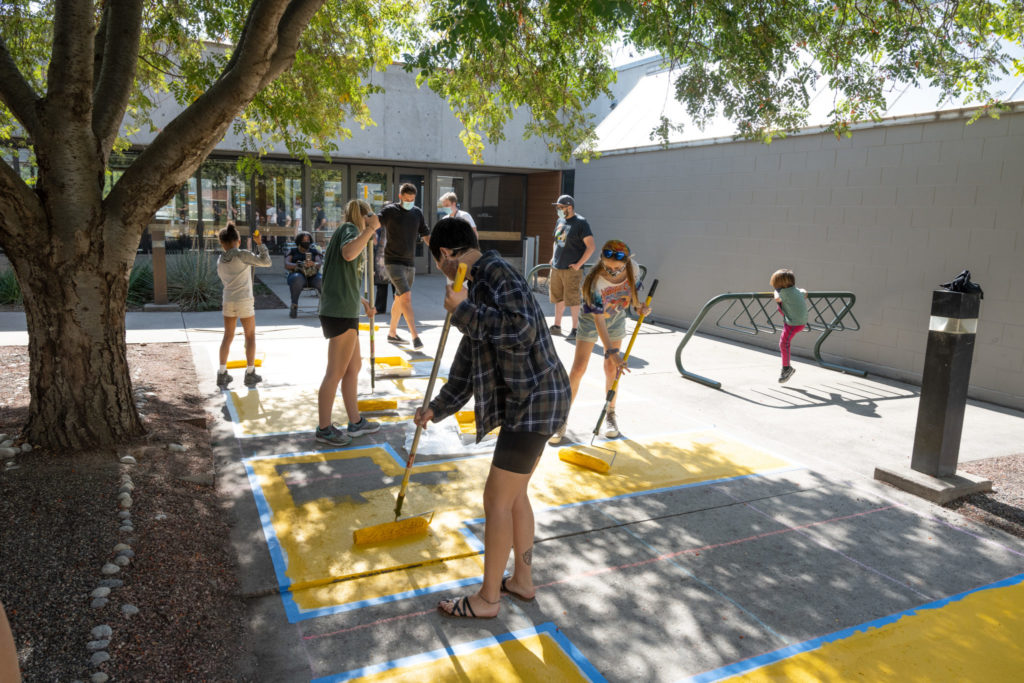

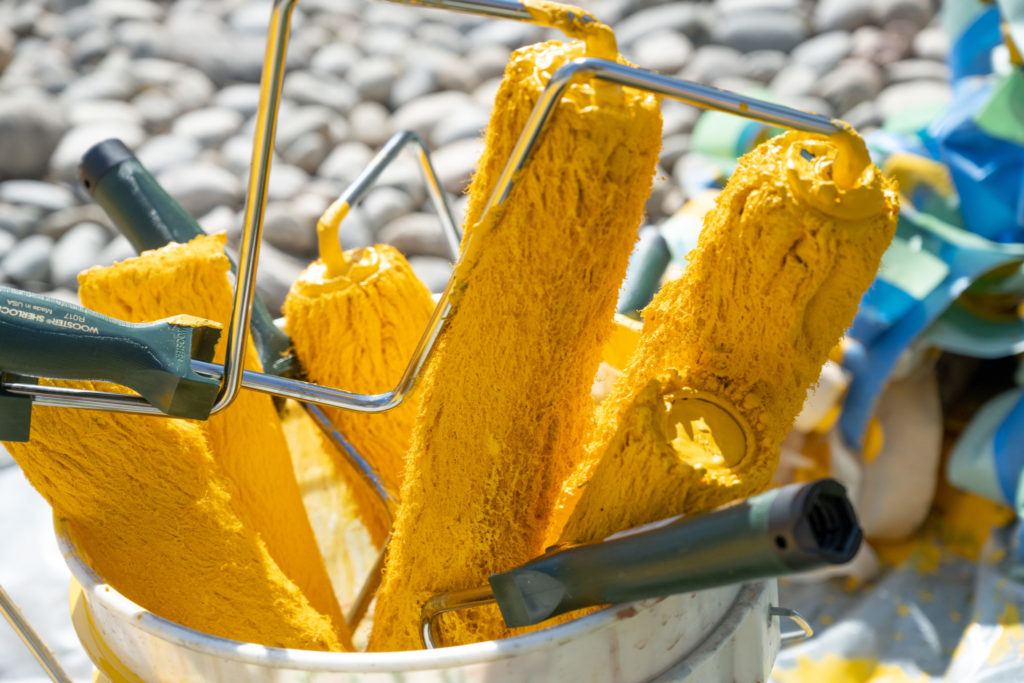
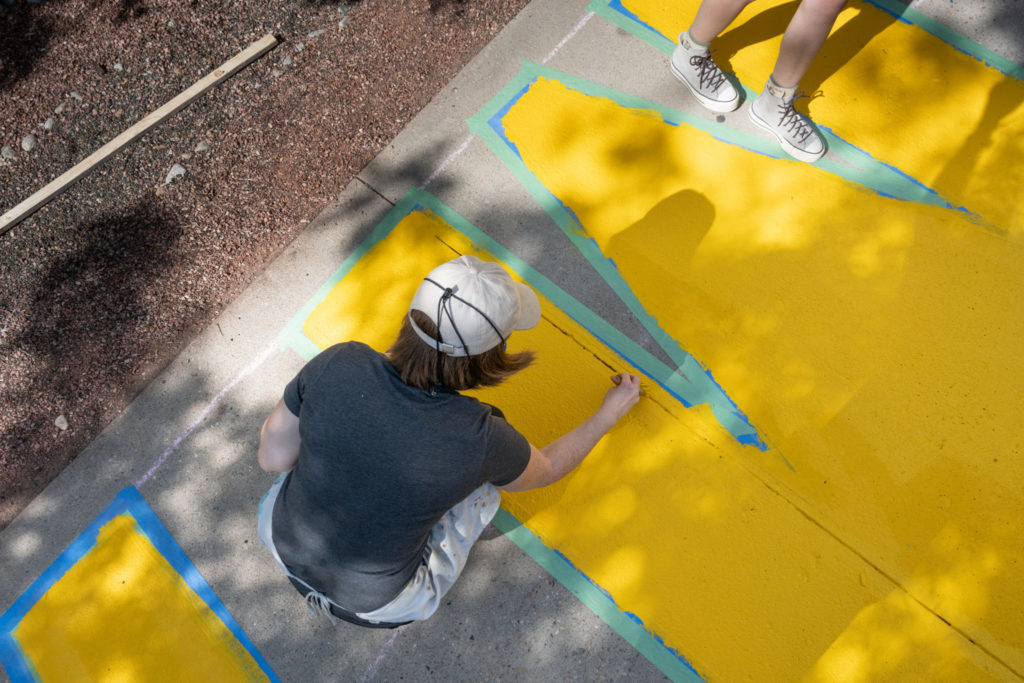
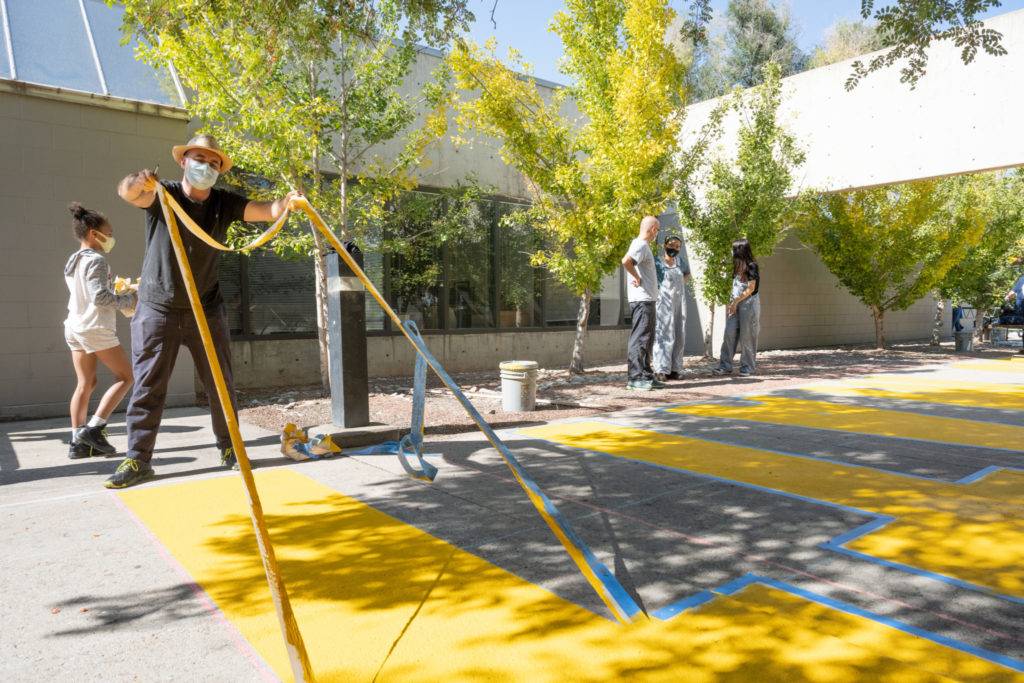
Photos by John Eisele
‘Educational tool’
“This project and the expression ‘Black Lives Matter’ is an extension of a conversation that’s been going on for four centuries,” said Ray Black, an assistant professor in the Department of Ethnic Studies. “The Engaged Art Walk is an educational tool, because some people don’t understand what the movement is about.”
Black’s Oct. 8 talk, “BLM: Where are YOU in the movement?”, served as the inaugural educational programming for the series. He said the biggest misconceptions about the BLM movement are that it’s anti-law enforcement or violent.
“People think it’s not peaceful, and it is peaceful, from the kneeling of athletes to people putting their hands up and saying, ‘Don’t shoot,’” Black explained.
He said the movement aims to challenge violence against people without due process.
“It’s opposing the idea that anyone can take a life in a way that’s clearly wrong and not face consequences, not face justice,” Black said. “As a land-grant institution that’s designed to serve and educate the public, this is an educational tool to see what the actual promise of our founding documents mean in words, to see what it looks like.”
Video by Ron Bend
Faculty contributions
The public art project, which is similar to others at universities such as University of California San Diego and University of Nevada Reno, was co-designed by faculty in the Department of Art and Art History: Aitor Lajarin-Encina, assistant professor of painting, oversaw the painting of the words, and Roberto Muntoreanu, assistant professor of graphic design, selected the typeface. The Martin typeface used in CSU’s mural by license was inspired by remnants of the 1968 Memphis Sanitation Strike and was designed by Black typographer Tré Seals. The paint is signal yellow Diamond Vogel non-slip traffic paint. Security cameras are also part of the installation.
“There will be a variety of reactions to the installation of the BLM mural,” said Bridgette Johnson, director of the Black/African American Cultural Center. “These reactions will be from one end of the spectrum to the next, objection to appreciation, anger to celebration, and the concern of performative allyship will be at the forefront for many. Now that this mural has been unveiled, I can only hope this new piece of artwork will be respected and honored, and not a distraction to the work that still needs to be done not just nationally, but also right here on our very own campus, specifically as it relates to substantive culture changes.”
“This mural is not a solution, nor will it be accepted as one,” added third-year student Jocelyn Lapham. “This mural is a statement that Black students matter, that Black students will be heard, and that CSU is ready to take this stepping stone to the next level. It is a statement that CSU — students, faculty/staff and administration — will not only uphold equity, but proactively fight for it and instill it day in and day out. I hope my fellow Rams are ready for this work that needs to be done, because I sure am!”
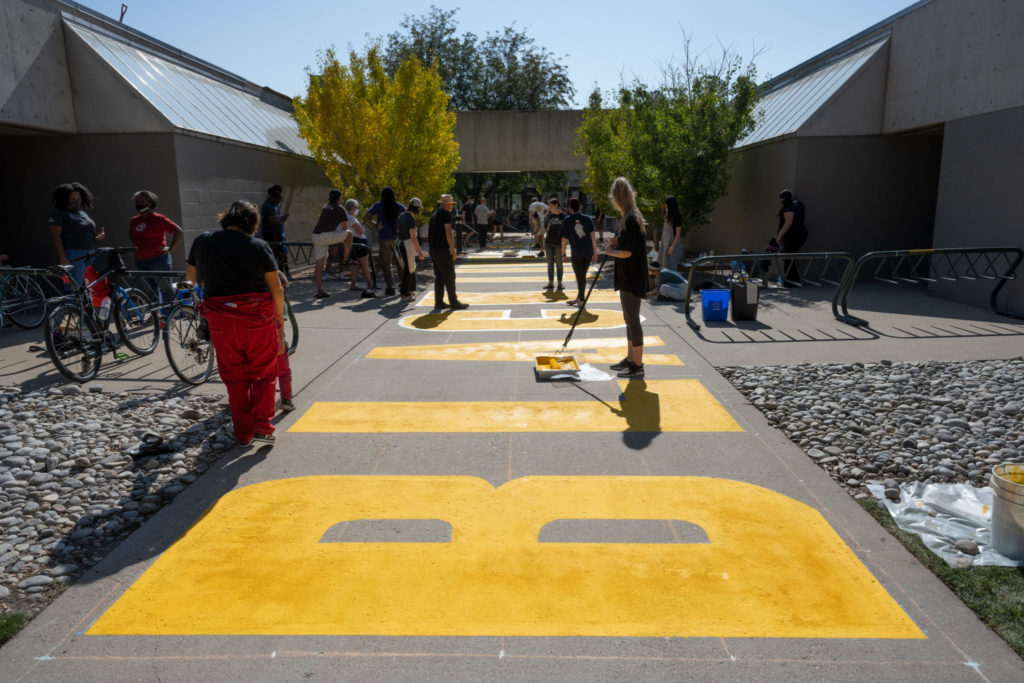
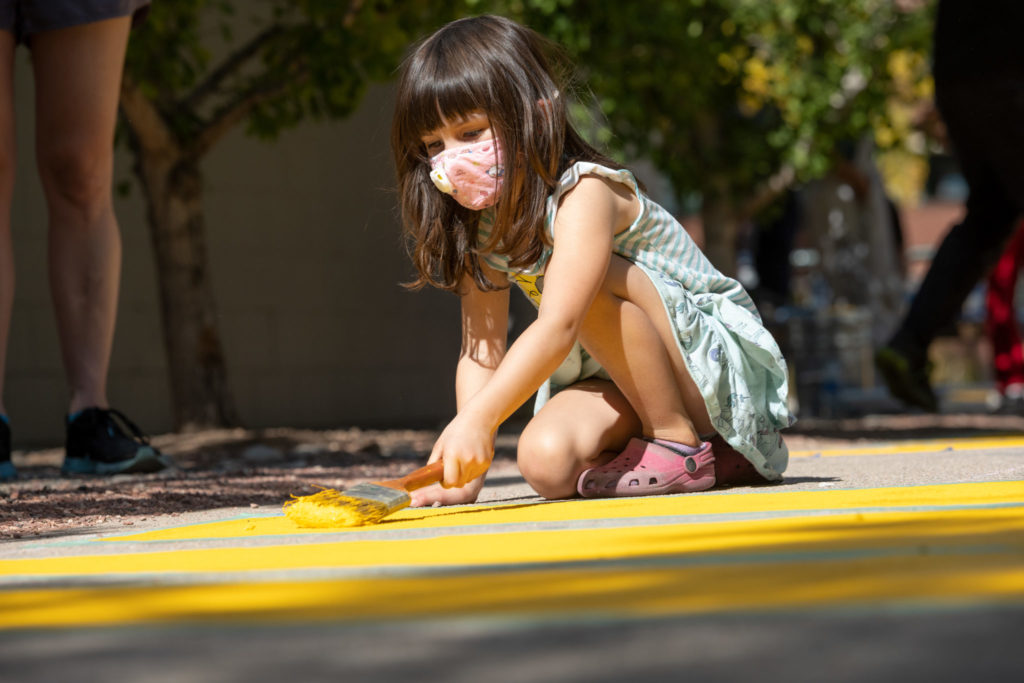
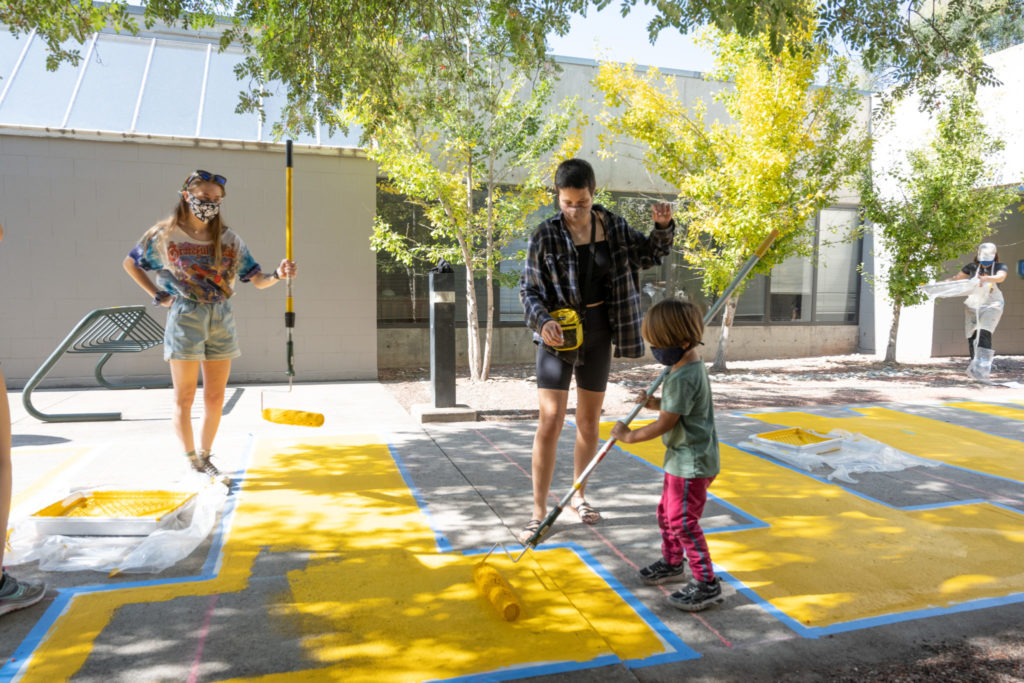
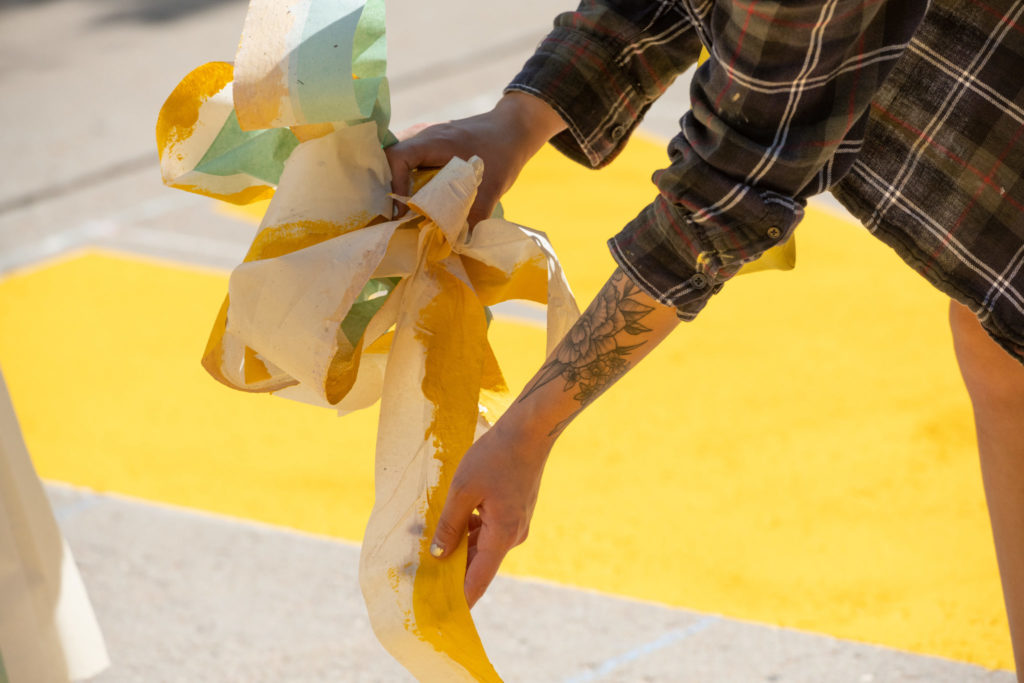
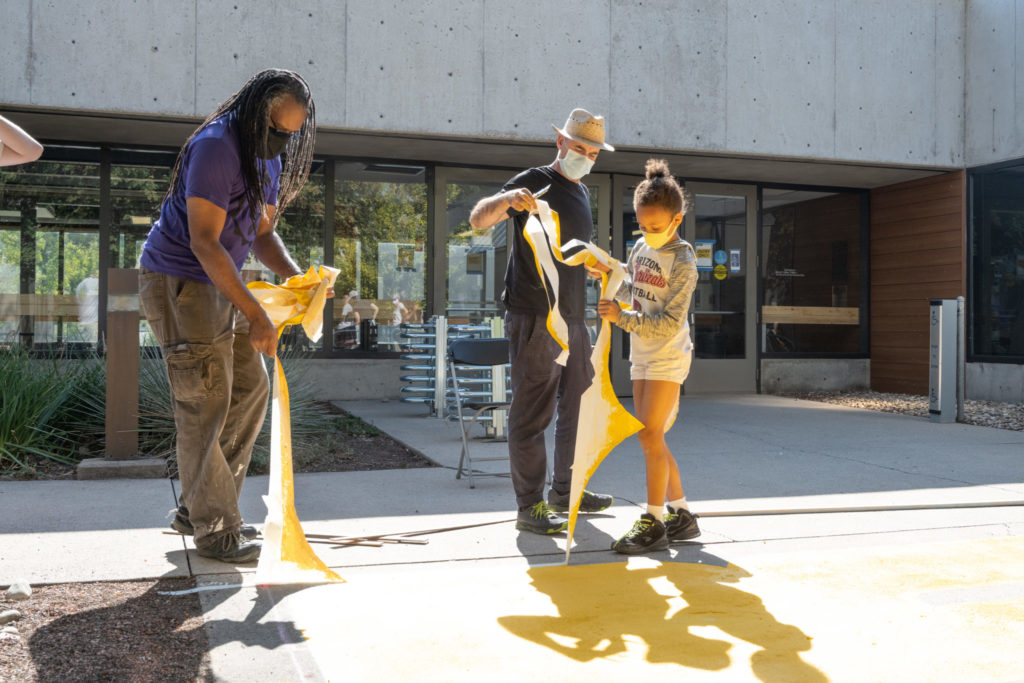
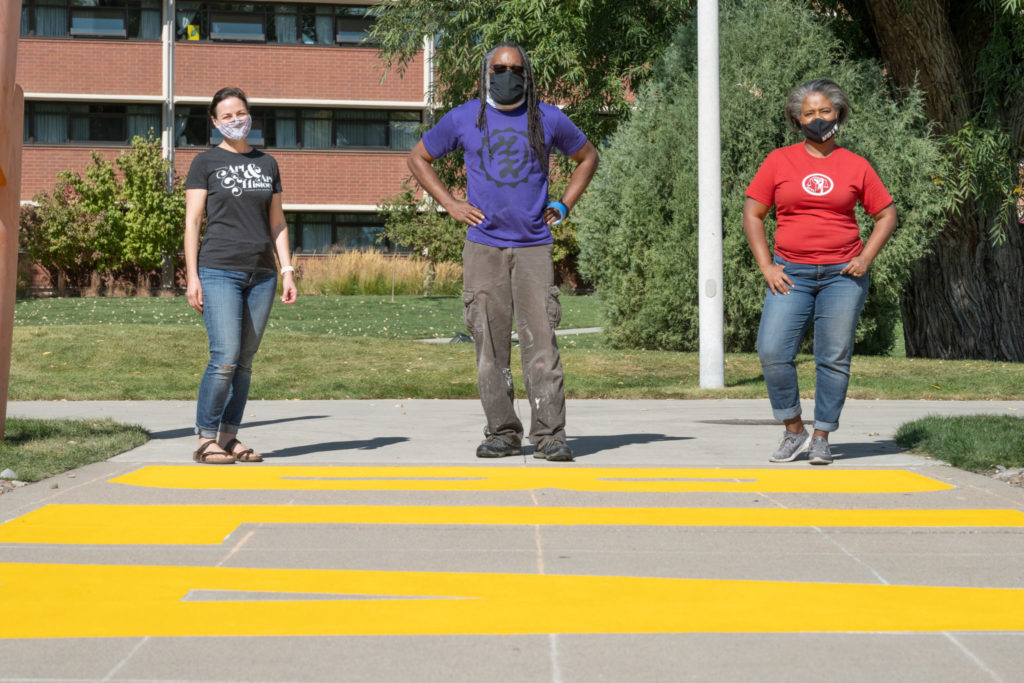

Photos by John Eisele
Other student perspectives
During the Oct. 10 installation, students shared their reasons for being there.
“I am here to be a voice to the generations who have been silenced in the past,” said second-year engineering student Maliek Swain.
“It is super-important as an artist to participate in political discourse, especially at the community level,” added painting graduate student Andrea Bagdon. “As I create art, I am in dialogue with history in a contemporary culture.”
“Based on the climate, it is the least I can do,” said fourth-year art student Emma Corwin. “I do what I can to be an advocate and an accomplice. If I can use my skills toward the fight for equality and injustice, I am all for it.”
The series of educational events continues on Nov. 9, when Moseman will host a webinar at 1 p.m. titled “A History of Mural Art and Civic Engagement.”
“Contemporary art often has a way of bringing people into conversation about difficult subjects,” Moseman said. “The team of project collaborators hopes that the BLM installation contributes to the dialogue on antiracism at CSU. This educational project is connected to the necessary work we are doing as part of our department’s diversity, equity, access and inclusion initiative led by associate professor of drawing Ajean Ryan.”
More information on upcoming programs can be found at art.colostate.edu/recurring-events/engaged-art-walk/.
Bridgette Johnson contributed to this story.
